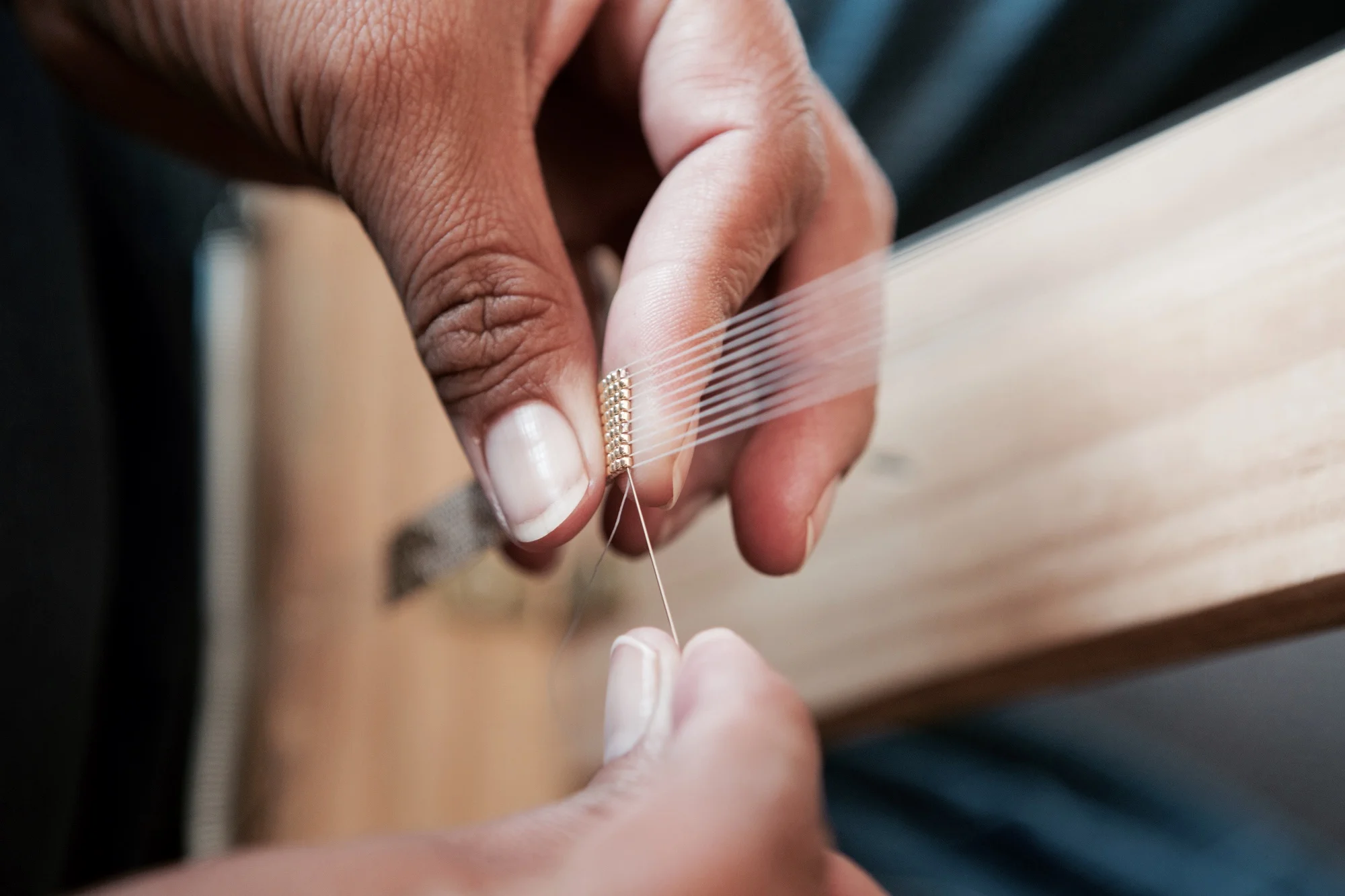Originally published in the New York Times' T Magazine.
A crop of new jewelry and fashion designers are incorporating practices they discovered while traveling to their ancestral homes. Here, three brands taking cues from ancient methods — and employing artisans trained in them.
Etkie, Southwestern United States
When Sydney Alfonso decided to start her jewelry line, Etkie, in 2014, she was living in Istanbul. But instead of using the Turkish kazalik technique of silk wire weaving, she chose to create bracelets and necklaces inspired by traditional Navajo beadwork and created on the same looms that have existed for centuries.
Alfonso is well on her way to achieving her ultimate goal: creating dignified jobs in local communities by honoring their inhabitants’ customs and traditions. The jewelry is made primarily on a Navajo reservation, just 30 minutes from the ranch in New Mexico where Alfonso grew up. “The artisans work from home and create their own schedules according to their family and community needs,” she says. What results are beautiful beaded bracelets that are equally traditional and modern. “Our artisans believe that when something is handcrafted, a piece of their spirit is infused in each piece,” Alfonso says. “With each stitch, you can tell it has been made with love.” etkie.com.
Kinsfolk, Sri Lanka
The jewelry designers Jessica and Josie Fernando have early memories of visiting batik and woodcarving workshops during childhood trips back to their father’s native Sri Lanka. So when they founded Kinsfolk in 2013, they launched a line of batik scarves. “Sri Lankan batik has a very old history,” Jessica says. “We are completely devoted to preserving the craft of handmade textiles by combining traditional batik methods with a more modern aesthetic.”
The sophisticated designs, drawn on pure, untreated silk with hot wax before dyeing, are inspired by nearly every corner of Sri Lanka — the most recent collection of scarves, Palmyrah, is named after “the long, elegant leaves” of northern Sri Lanka’s Palmyrah palms, and the sisters have also designed scarves named after small south Sri Lankan towns. “There are many more traditional handicrafts in Sri Lanka that we wish to use for future designs and products,” Jessica says. kinsfo.lk.
Mataano, Ethiopia and Somalia
Twins Ayaan and Idyl Mohallim moved from their native Somalia at age 9 to escape civil war. In 2012, decades later and three years after founding Mataano, they returned to East Africa for Hub of Africa Fashion Week and traveled to the Harari region. “We found ourselves taking photos of indigenous tribes and old architecture, scouring the markets for fabric and print inspiration,” Ayaan says of the trip.
For their fashion shows in Addis Ababa, they used shoes and accessories created by local craftsmen. “We are firm believers that the story of a destination is best told through the eyes of local artisans,” Ayaan says. Soon after, scenes from the Omo Valley — sheer blouses inspired by the Hamer Tribe, weaving inspired by Ethiopian architectural patterns — made their way into the designs of their spring and resort collections. mataano.com.



